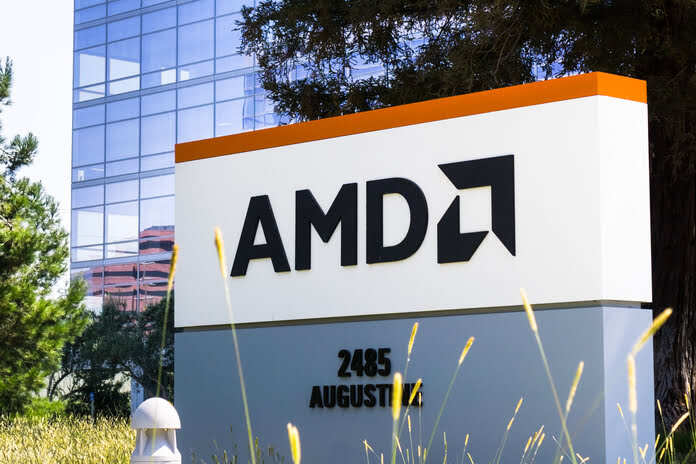Shares of Advanced Micro Devices (NASDAQ:AMD) surged on Monday after some analysts stated they were slightly more optimistic about the semiconductor company ahead of its second-quarter earnings tomorrow. According to investment firm Lynx Equity Strategies, Intel’s (NASDAQ:INTC) recent dismal results were beneficial to Dr. Lisa Su’s AMD (AMD), as the company’s “advantage over Intel in data centers could be more sustainable than envisaged a quarter ago.”
Furthermore, Lynx Equity Strategies stated that, while investors expected AMD’s (AMD) server market advantage over Intel (INTC) to fade after 2023, given the weak report, the advantage is likely to persist at least until 2024. In the research, Lynx Equity Strategies boosted its price target from $95 to $110. Advanced Micro Devices (AMD) rose more than 3% to $97.39 in early trade on Monday, while Intel (INTC) rose 3.5%. Separately, investment company Susquehanna Group predicted that AMD (AMD) would “fare substantially better” than Intel (INTC) in the second quarter but that its PC-related performance would be lackluster.
Is AMD A Buy Before Upcoming Earnings?
Since the beginning of the second quarter, chip stocks have been steadily rising, amid deteriorating indicators of an economic downturn, particularly in the consumer end market. However, three essential elements might help you decide whether or not to buy the stock.
- Weakness Consumer Expenditure
Alarms from the industry about declining chip demand from consumer end markets, particularly those used in consumer electronics such as cellphones and PCs, are becoming louder, echoing earlier investor concerns about a slowing semiconductor cycle after a multi-year boom.
Global PC shipments have already begun to slow in the first half of the year, with first-quarter volumes falling 6.8% year on year to 78 million units and second-quarter volumes falling more than 15% to 71 million units as consumer discretionary spending power weakens due to rising inflationary pressures. Global PC shipments are expected to fall by 9.5% this year, led by a 13.1% reduction in consumer PCs and a 7.2% loss in enterprise PCs. As a result, demand for similar chips is likely to fall by more than 5% this year. Meanwhile, semiconductor demand from smartphone makers is predicted to rise by just slightly more than 3% this year, a major slowdown from the 25% surge seen in 2021.
Despite evidence of a slowing consumer end market as consumers reduce discretionary spending due to near-term economic uncertainty, AMD’s growth in this segment is projected to be resilient given its limited direct exposure.
- Data Center Strength
Accelerating demand for data center processors is also expected to mitigate AMD’s PC-related issues. Global demand for data center processors will stay high in the next years. Cloud computing remains a crucial need in the corporate sector, with no signs of abating. The market for data center processors, in particular, is forecast to grow by at least 20% this year, more than offsetting any consumer-related slowdown that AMD may see owing to the near-term macroeconomic downturn.
The positive trends are further supported by the increasing urgency of enterprise cloud migration to accommodate a new era of remote working, as indicated in the previous section. More than half of firms anticipate that cloud adoption will account for a substantial share of investments over the next two years, propelling the worldwide cloud-computing market to more than $800 billion by 2025. Meanwhile, the market for AI hardware, such as data center chips like AMD’s EPYC server CPUs, is predicted to grow at a CAGR of 43% to $1.7 trillion by the decade’s end.
- Strong Fundamentals
Over the last seven quarters, AMD has consistently had good sales and earnings surprises. And we anticipate that AMD’s 2Q22 earnings will be similarly strong, with top-and bottom-line growth driven by ongoing market share gains and the ramp-up of new products to scale.
Top-line, AMD continues to demonstrate its ability to capture market share gains in an increasingly competitive sector by strengthening its technological capacity to attract demand and growing its total addressable market (“TAM”) through recent acquisitions such as Xilinx and Pensando. Specifically, the merging of Xilinx and Pensando is projected to create new synergies when combined with AMD’s existing competence in CPU and GPU processors, propelling the chipmaker into new endeavors to diversify its income stream.
Is AMD a Buy Before Earnings?
While some chipmakers’ performance has begun to suffer due to declining demand in consumer end markets, others, such as AMD, have continued to benefit from stable demand in non-consumer verticals such as data center and automotive end markets.
We believe that the ongoing market volatility in response to near-term macroeconomic uncertainties has created a compelling entry opportunity in AMD as a long-term investment, with the expected demonstration of resilience in AMD’s upcoming 2Q22 results underpinning a strong re-emergence from this year’s sell-off towards greater sustained upside ahead. As a result, we keep our short-term price objective of $160 on AMD stock, representing an upside potential of about 70% based on the shares’ last trading price of $94.47 on July 29.
Featured Image: Megapixl @Andreistanescu

















